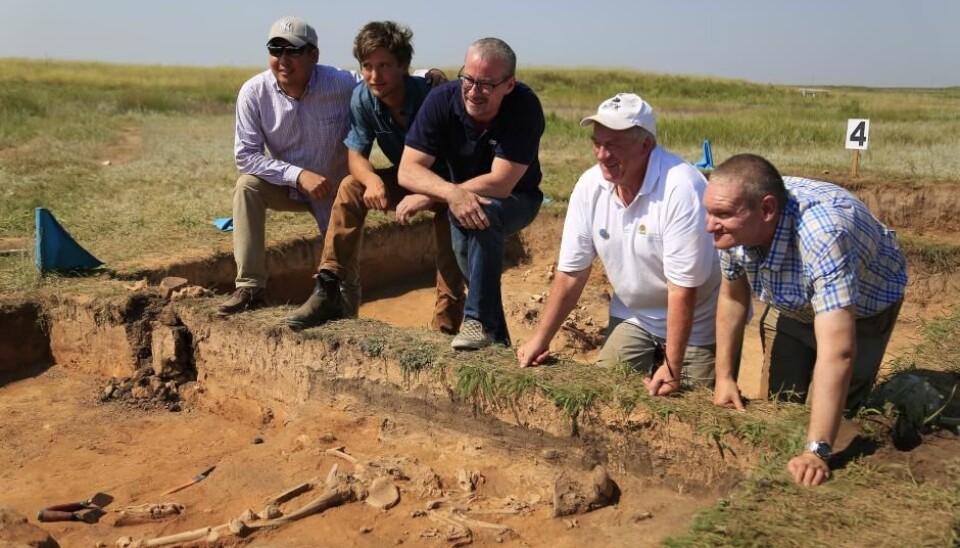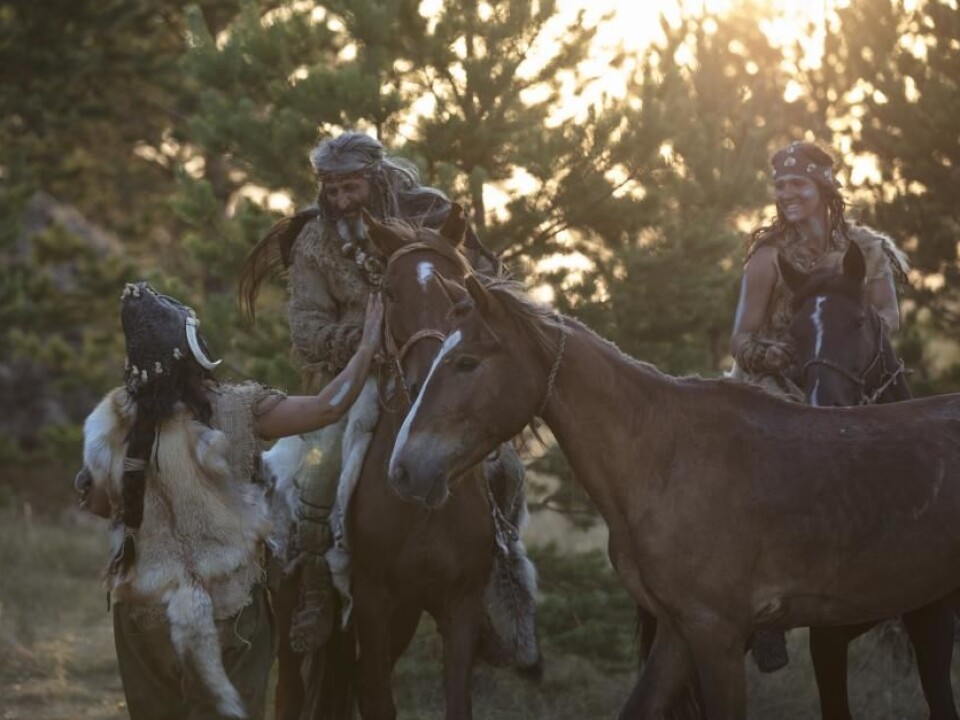
A bumper crop of ancient DNA solves key mysteries of ancient human societies
The largest combined study of DNA extracted from ancient skeletons reveals dynamic shifts in genetics, language, and culture in the past 11,000 years.
Three new studies have mapped the DNA collected from ancient human skeletons in southeast Europe, all the way to northwest China, revealing new details about the origins of these ancient people.
“Genetics has given archaeology a kick in the ass in recent years, so we have to reinterpret our entire recent history,” says co-author, Professor Kristian Kristiansen, an archaeologist at Gothenburg University, Sweden.
“We’re on the way to an entirely new level in reconstructing events in our history, which we’ve not come close to before,” he says.
The results are published in two studies (here and here) in the scientific journal, Nature, and one study in Science.
Bronze Age migrations shaped Europe

In 2015, evolutionary geneticist Eske Willerslev and his research group at the Centre for Geogenetics at the Natural History Museum of Denmark, discovered evidence for a Bronze Age migration of the nomadic Yamnaya people from the Pontic-Caspian steppe into Northern Europe, 5,000 years ago.
This migration changed both the culture and the genetics of Europeans, and helped shape who we are today.
The research suggested that in order to understand the origins of European cultures, scientists needed to look towards the grassland steppes of southeast Europe and Asia. This is just what the three new studies have done.
Read More: History rewritten: Europeans were “born” in the Bronze Age
Genomes cover 8,000 kilometres and 11,000 years
Collectively, Willerslev and his colleagues mapped genetic material (genomes) from more than 200 ancient human skeletons, making it the largest such study to date.
The data span from 11,000 to 500 years ago and cover a large geographical area from Hungary and Romania to the Caucasus, Mongolia, and bordering northwest China—an 8,000 kilometre transect.
The data paint a surprisingly dynamic picture of our history with large shifts in genetics, language, and culture.
They show just how important horses were to these changes.
“In a few thousand years, one culture after another is removed. This is when horses arrive, and it becomes very dynamic,” says Willerslev.
Mystery of horse domestication solved
Domesticating horses allowed people to travel long distances much more quickly than before, which allowed them to occupy territories and feed larger populations.
“In the past 5,000 years, human development is linked to the horse, in terms of connecting the establishing trade routes of Europe with East Asia and South Asia, and the steppes form this highway,” says PhD student Peter de Barros Damgaard from the Natural History Museum of Denmark. Damgaard is the lead-author on all three studies.
The new results solve an old puzzle: Who domesticated the horse? And it was not the Yamnaya who already kept livestock such as goats and sheep.
Instead, it was an ancient hunter-gatherer people known from the archaeological site of Botai from east of the Urals. The Yamnaya then continued this domestication, probably inspired by the Botai and this allowed their culture to “explode.”
“This starts the explosion of these herding communities who come to Europe,” says Damgaard.
“Domestication of horses allows the Yamnaya to flourish and all of a sudden they are these large groups of people that move into existing societies,” he says.
Read More: First Scandinavians came from north and south
DNA solves mysteries of language
The new studies also cast light on another mystery: How a later people who formed the Sintashta culture—descendants of shepherds—brought the Indo-European languages from South Asia all the way to India.
“It’s really an old mystery that we now have a solution for,” says Kristiansen.
Until now, the archaeological, genetic, and linguistic data told very different stories of this migration, but the new genetic data provide consistency for the first time.
“Ancient DNA has far greater strength to test different hypotheses than studies based on archaeology and language alone. But the beauty is that you can also learn more about the development of language through these studies,” says Professor Mikkel Schierup from the Bioinformatics Research Centre, Aarhus University, Denmark.
Scythian cavalry gained ground
The new studies offer further insights into yet another mystery.
1,000 years later, horses had another important role to play in the development of these ancient societies. A warrior culture, called the Scythians (900 to 200 BCE), began riding horses instead of driving chariots. They were skilled and dangerous mounted archers, who could shoot up to two arrows a second using a new type of bow.
They were a formidable military force, controlling important trading routes and even caused the Assyrian empire to fall.
Archaeologists have long debated whether the Scythians came from Siberia or the Caucasus, but the new ancient DNA evidence suggests that both theories are correct.
The new studies reveal that the Scythians have different local genetic origins, while sharing a common culture, indicating that people adopted the culture without large-scale migrations.
Read More: Genetics have remained constant for 8,000 years in world’s melting pot
Next stage: The Mediterranean
Ancient DNA is revealing new information about our history and some of the big pieces of the puzzle are beginning to fall into place. Significantly, it shows a dynamic and complex history of ancient human cultures.
“It’s incredible that so much of the world is established so late in history, in relation to where people are located and what their genetics look like,” says Willerslev.
But it is just the beginning and there is much more to come.
“With genetics, interdisciplinary studies have gained an entirely new momentum, and we’re right in the middle at a very exciting place,” says Kristiansen. “Now you can say that we’ve covered all of central Asia. The next step is the Mediterranean,” he says.
And what about having three new studies published simultaneously in the top journals, Nature and Science?
“I don’t know if it’s a record, but I’ve never tried it before!” says Willerslev.
---------------
Read more in the Danish version of this article at Videnskab.dk
Translated by: Catherine Jex
Scientific links
- “137 ancient human genomes from across the Eurasian steppe”, Nature (2018)
- “Ancient Hepatitis B viruses from the Bronze Age to the Medieval period”, Nature (2018)
- “The first horse herders and the impact of Early Bronze Age steppe expansions into Asia”, Science (2018)



